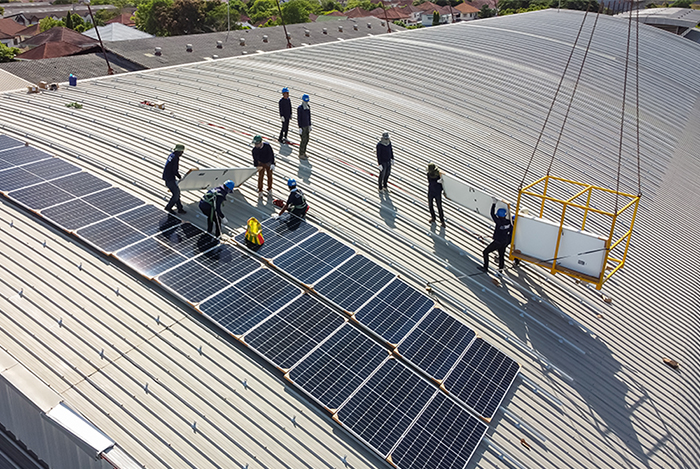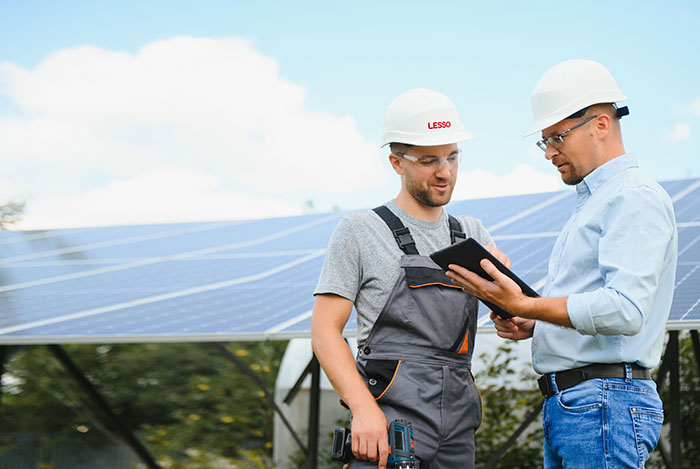I. Safety precautions
Personal protection: When performing solar panels installation operations, appropriate safety equipment, including helmets, safety belts and gloves, should be worn to prevent accidental injuries.
Work environment safety: Ensure the safety of the construction environment, especially when working at heights, to prevent accidents such as falling.
II. Preparations before installation
Site selection and planning: Choose an open, unobstructed location for solar panels installation to ensure that the system can receive sufficient sunlight. At the same time, according to the actual situation on site, reasonably plan the layout and line direction of solar panels .
Material inspection: Use high-quality materials, such as high-strength aluminum alloy or stainless steel, to ensure the stability and durability of the photovoltaic system. Before installation, carefully check whether photovoltaic panels, brackets, cables and other components are intact.
III. solar panels installation
Cleaning and inspection: Before installation, clean the surface of the solar panels to ensure that it is free of dust and oil. Check whether the solar panels is damaged or defective.
Angle and direction: According to local lighting conditions and climate conditions, adjust the installation angle and direction of the solar panels to optimize power generation efficiency.

Bracket fixing: Establish a stable bracket structure and ensure that the bracket is firmly placed on a solid foundation. The bracket should be able to withstand the weight of the solar panels and external wind force.
Avoid shading: Ensure that there is no shading between the solar panels and between them and other buildings or objects to ensure that the solar panels can receive sunlight to the greatest extent.
IV. Wiring and connection
Wiring specifications: Perform correct wiring according to design requirements to ensure that the connection points are firm and without false connections or disconnections. Pay special attention to the polarity of the wiring to avoid safety issues such as equipment damage or fire caused by reverse connection.
Routing planning: Shorten the cable routing distance as much as possible and distribute the cables evenly to reduce power loss and cost. At the same time, protect the cables from mechanical damage or harsh environment.
V. Subsequent maintenance
Regular inspection: After installation, the photovoltaic system should be inspected regularly, including the cleanliness of the solar panels, the stability of the brackets, and the integrity of the cables.

Professional maintenance: For professional maintenance of solar system, it is recommended to ask professionals with relevant qualifications to ensure the quality and safety of maintenance work.
In summary, solar panel installation involves many aspects, including safety, site selection and planning, material inspection,solar panels installation, wiring and connection, and subsequent maintenance. Only by strictly following the requirements in each link can the stable operation and efficient power generation of the solar system be ensured.







